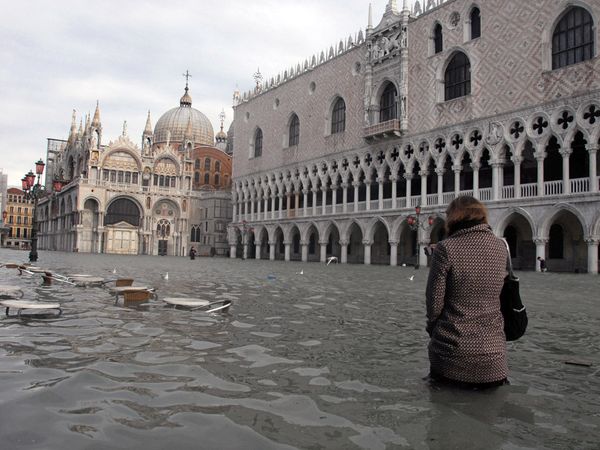January 15, 2015 – Scientists have been using a figure of 1.5 to 1.8 millimeters (0.059 to 0.070 inches) annually in describing the rise in sea level throughout the 20th century. Turns out that the number isn’t right. From 1900 to 1990 sea levels were actually rising at a rate of 1.2 millimeters (0.047 inches) per year. That’s less than previously thought. Whew! All that alarm for nothing.
But wait it turns out we haven’t dodged the bullet because since 1990 the rate of sea level rise has increased to 3 millimeters (0.118 inches) according to scientists from Harvard University. So what we gained in a lower rate in the first 90 years of the 20th century we have seen vanish in the last decade and first of the 21st century. Based on the new calculation our oceans are rising about an inch and a quarter per decade, and 2.5 times faster than previously thought.
The scientists who have worked out the corrected number from Harvard’s Earth and Planetary Sciences Department, point out that “sea-level acceleration over the past century has been greater than had been estimated by others.” The authors, Carling Hay and Eric Morrow, who published their findings in the journal Nature, expressed concern that the models and projections previously used to predict where sea levels will go by the end of the 21st century need to be rethought.
They also noted that the science of measuring sea level rise is still imperfect. That more data points are needed to ensure the measure of sea levels is calculated based on a much larger data set than in current use. “Large areas of the ocean aren’t being included in these estimates.”
Hay and Morrow study individual ice sheets and their contributions to global sea level rise. Their discovery was made applying physics-based and model-derived geometries to tide gauge records leading to a corrected annual rise based on more than 110 years of data.
At current rates of 3 millimeters per year it projects out to a rise of close to one foot by 2100. What does a one foot mean to coastal populations? It isn’t just a question of land lost to the sea. Seawater invades freshwater aquifers (just ask the folks in Florida). It contaminates drinking water. It destroys shoreline habitats. In storm surges it means increased shore erosion and flooding. And ultimately it will makes refugees out of hundreds of millions who live along present ocean coastlines.
Hay and Morrow attribute the accelerated rise to many things including thermal expansion as the ocean absorbs more carbon dioxide plus the melting of sea and land ice in polar regions. The current observation of a 3 millimeter annual rise is not necessarily the rate that the ocean will continue to rise in the future. If anything that annual rate may increase in the coming decades of the 21st century.
The people of Venice can tell you what it is like to live beside a rising sea. The picture below is one frequently seen in that city. But it soon may become a common image for many more coastal communities.






















